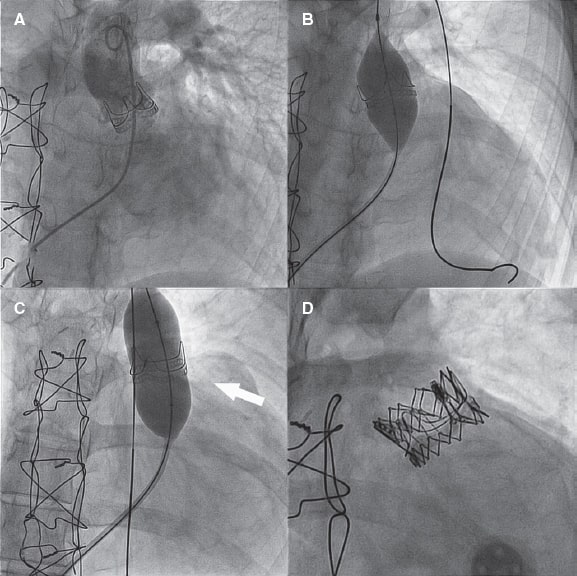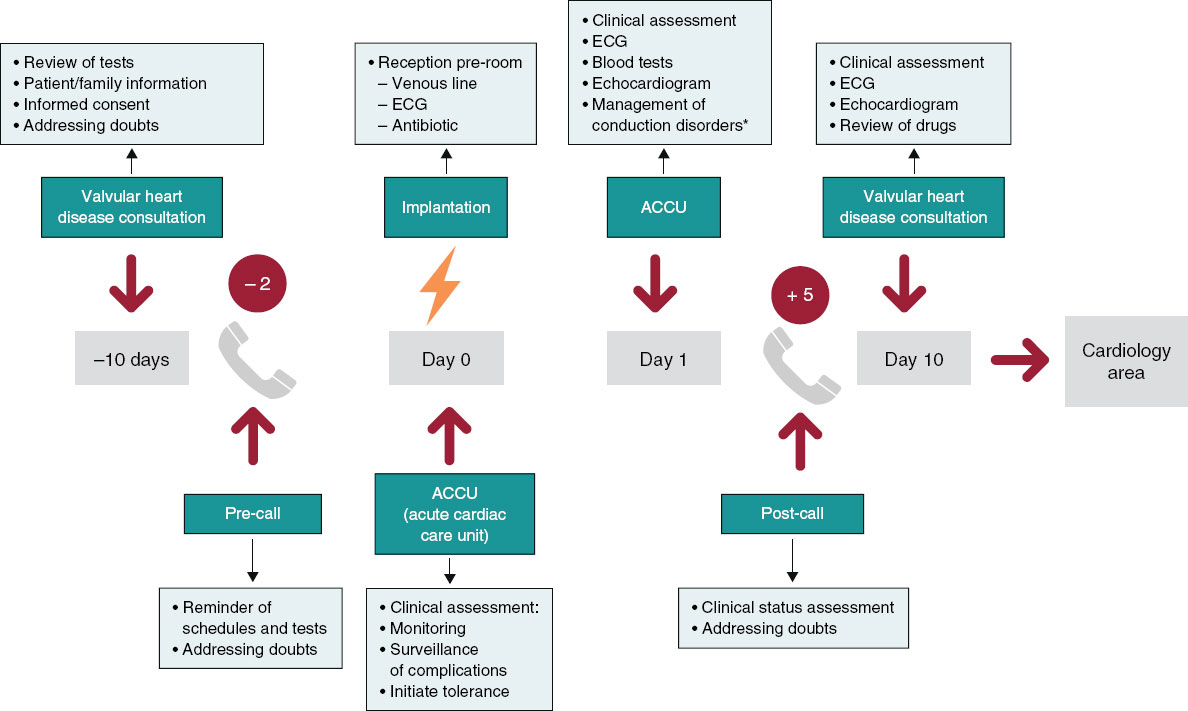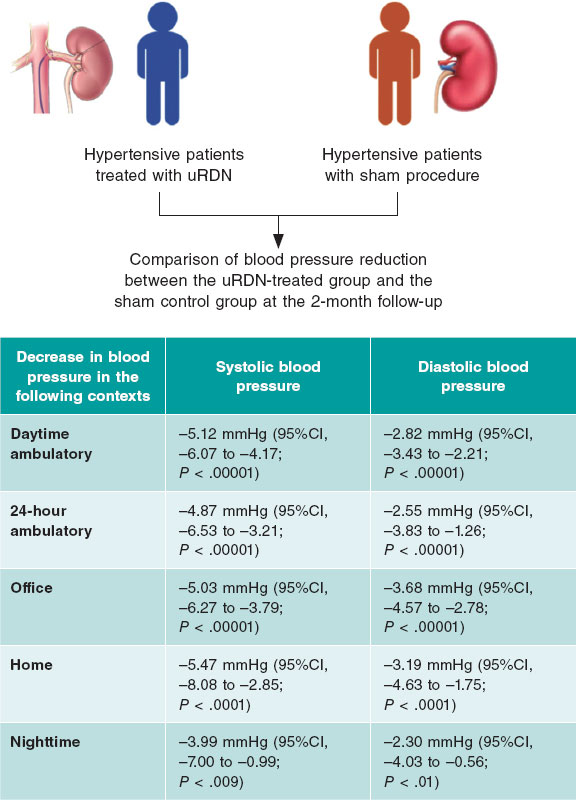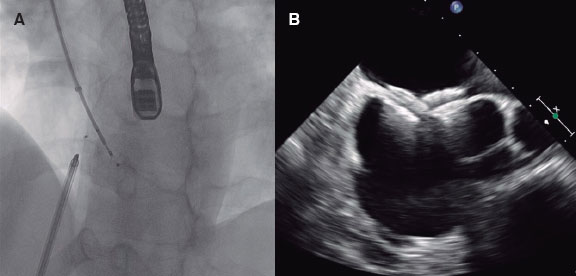| 1 x afterRenderModule mod_custom (Home Superior Izquierda -EN) (5.67MB) (14.21%) | 172ms |
| 1 x afterRender (1018.69KB) (10.36%) | 125ms |
| 1 x afterRenderModule mod_custom (Home Inferior Derecha -EN) (2.32MB) (8.18%) | 98.80ms |
| 1 x afterRenderComponent com_content (132.16KB) (6.75%) | 81.54ms |
| 1 x afterRenderModule mod_custom (Article Herramientas Estadísticas - ENG) (707.62KB) (4%) | 48.26ms |
| 1 x afterRenderModule mod_custom (Home Debate Enlaces EN) (1.48MB) (3.72%) | 44.92ms |
| 1 x afterInitialise (3.33MB) (3.53%) | 42.61ms |
| 1 x Before Access::getAssetRules (id:8 name:com_content) (1.09MB) (3.06%) | 37.01ms |
| 1 x beforeRenderRawModule mod_breadcrumbs (Breadcrumbs EN) (1.25MB) (3.06%) | 36.93ms |
| 1 x afterRenderModule mod_custom (Most shared) (278.13KB) (2.89%) | 34.85ms |
| 1 x afterRenderModule mod_custom (Header Article -EN) (431.78KB) (2.46%) | 29.72ms |
| 1 x afterRenderModule mod_custom (Home Superior Derecha -EN) (992.93KB) (2.24%) | 27.03ms |
| 1 x afterRenderModule mod_custom (Most read) (446.56KB) (1.97%) | 23.77ms |
| 1 x afterRoute (892.7KB) (1.92%) | 23.23ms |
| 1 x afterRenderModule mod_custom (Article - Referencia ) (671.16KB) (1.51%) | 18.24ms |
| 1 x afterRenderRawModule mod_dms3_refs (Article Herramientas Exportar - ENG) (62.31KB) (1.44%) | 17.45ms |
| 1 x afterRenderModule mod_custom (Article Herramientas Traducción - ENG) (266.52KB) (1.44%) | 17.37ms |
| 1 x afterRenderModule mod_custom (Article DOI activo) (311.23KB) (1.26%) | 15.28ms |
| 1 x afterRenderModule mod_custom (Debate Title) (383.27KB) (1.23%) | 14.83ms |
| 1 x afterRenderModule mod_custom (Article Herramientas Compartir -EN) (306.02KB) (1.17%) | 14.14ms |
| 1 x afterRenderModule mod_custom (Caso clínico 1) (167.63KB) (1.15%) | 13.88ms |
| 1 x afterRenderModule mod_custom (Caso clínico 2) (167.63KB) (1.14%) | 13.73ms |
| 1 x afterRenderModule mod_custom (Article Herramientas Material Adicional) (188.61KB) (1.12%) | 13.51ms |
| 1 x afterRenderModule mod_custom (Article - Comments Section) (114.95KB) (1.04%) | 12.51ms |
| 1 x afterRenderModule mod_custom (Article Related contents EN) (172.44KB) (0.98%) | 11.86ms |
| 1 x afterRenderModule mod_custom (Foto Autor) (154.54KB) (0.97%) | 11.73ms |
| 1 x afterRenderModule mod_custom (Article Category -EN) (215.7KB) (0.97%) | 11.68ms |
| 1 x afterRenderModule mod_custom (Innovacion Herramientas Compartir -EN) (214.79KB) (0.95%) | 11.47ms |
| 1 x afterRenderModule mod_custom (Article Authors) (155.51KB) (0.95%) | 11.46ms |
| 1 x afterRenderModule mod_custom (Article Translated Title) (152.91KB) (0.9%) | 10.88ms |
| 1 x afterRenderModule mod_custom (Article Title) (143.09KB) (0.9%) | 10.83ms |
| 1 x afterRenderModule mod_custom (Article Herramientas Descargar - ENG) (121.84KB) (0.88%) | 10.63ms |
| 1 x afterRenderModule mod_custom (Article Subtitulo) (154.13KB) (0.86%) | 10.41ms |
| 1 x afterRenderModule mod_custom (Innovacion Herramientas Traducción EN) (144.09KB) (0.85%) | 10.32ms |
| 1 x afterDispatch (355.3KB) (0.82%) | 9.90ms |
| 1 x afterRenderModule mod_custom (Separador) (122.67KB) (0.81%) | 9.78ms |
| 1 x afterRenderModule mod_custom (Article Herramientas Imprimir -EN) (122.31KB) (0.81%) | 9.74ms |
| 1 x afterRenderModule mod_custom (EMAIL Y TWITTER INGLES) (123.5KB) (0.81%) | 9.74ms |
| 1 x afterRenderModule mod_custom (Innovacion Herramientas Imprimir -EN) (122.16KB) (0.76%) | 9.15ms |
| 1 x afterRenderModule mod_custom (Innovacion Herramientas Estadísticas -EN) (132.48KB) (0.71%) | 8.56ms |
| 1 x Before Access::getAssetRules (id:1 name:root.1) (303.44KB) (0.64%) | 7.73ms |
| 1 x After Access::preloadPermissions (com_content) (1000.61KB) (0.37%) | 4.41ms |
| 1 x beforeRenderRawModule mod_custom (Publication of Sociedad Española de Cardiología) (3.55KB) (0.26%) | 3.13ms |
| 1 x afterLoad (73.26KB) (0.23%) | 2.74ms |
| 1 x afterRenderRawModule mod_articles_good_search (Articles Good Search Total (Lateral) (EN)) (41.79KB) (0.21%) | 2.57ms |
| 1 x afterRenderRawModule mod_languages (Language Switcher) (8.33KB) (0.2%) | 2.39ms |
| 1 x afterRenderRawModule mod_breadcrumbs (Breadcrumbs EN) (49.38KB) (0.16%) | 1.94ms |
| 1 x afterRenderRawModule mod_menu (Footer Final EN) (27.91KB) (0.15%) | 1.80ms |
| 1 x beforeRenderRawModule mod_menu (Footer Final EN) (3.03KB) (0.14%) | 1.69ms |
| 1 x afterRenderRawModule mod_menu (About us) (22.11KB) (0.13%) | 1.55ms |
| 1 x afterRenderRawModule mod_menu (Publish) (20.76KB) (0.12%) | 1.51ms |
| 1 x afterRenderRawModule mod_menu (Content) (18.4KB) (0.12%) | 1.50ms |
| 1 x beforeRenderRawModule mod_custom (Article Herramientas Descargar - ENG) (5.77KB) (0.11%) | 1.33ms |
| 1 x beforeRenderRawModule mod_menu (Content) (3.03KB) (0.11%) | 1.33ms |
| 1 x afterRenderRawModule mod_menu (Sidebar Menú EN) (14.85KB) (0.1%) | 1.16ms |
| 1 x afterRenderRawModule mod_menu (Sidebar - REC: Publications) (15.73KB) (0.09%) | 1.07ms |
| 1 x afterRenderRawModule mod_menu (Permanyer Publications) (10.02KB) (0.08%) | 991μs |
| 1 x Before Access::preloadComponents (all components) (195.02KB) (0.08%) | 947μs |
| 1 x After Access::preloadComponents (all components) (129.49KB) (0.08%) | 929μs |
| 1 x beforeRenderRawModule mod_custom (Home Superior Izquierda -EN) (64B) (0.07%) | 801μs |
| 1 x beforeRenderRawModule mod_custom (Article - Comments Section) (528B) (0.06%) | 738μs |
| 1 x afterRenderModule mod_custom (Home Concurso Hemodinamica EN) (4.48KB) (0.06%) | 714μs |
| 1 x afterRenderRawModule mod_esmedicodisclaimer (esmedicodisclaimer esmedicodisclaimer) (6.49KB) (0.06%) | 707μs |
| 1 x afterRenderModule mod_breadcrumbs (Breadcrumbs EN) (4.09KB) (0.06%) | 682μs |
| 1 x afterRenderRawModule mod_custom (Header Article -EN) (3.95KB) (0.05%) | 632μs |
| 1 x afterRenderModule mod_custom (Publication of Sociedad Española de Cardiología) (3.31KB) (0.05%) | 627μs |
| 1 x beforeRenderRawModule mod_custom (Debate Title) (368B) (0.05%) | 589μs |
| 1 x afterRenderModule mod_articles_good_search (Articles Good Search Total (Lateral) (EN)) (10.48KB) (0.04%) | 530μs |
| 1 x afterRenderRawModule mod_lightbox (Lightbox) (7.35KB) (0.04%) | 529μs |
| 1 x beforeRenderRawModule mod_custom (Header Article -EN) (64B) (0.04%) | 475μs |
| 1 x beforeRenderRawModule mod_custom (Home Concurso Hemodinamica EN) (4.69KB) (0.04%) | 443μs |
| 1 x beforeRenderComponent com_content (12.31KB) (0.03%) | 406μs |
| 1 x afterRenderModule mod_menu (Footer Final EN) (3.67KB) (0.03%) | 377μs |
| 1 x beforeRenderRawModule mod_custom (Home Superior Derecha -EN) (12.5KB) (0.03%) | 376μs |
| 1 x afterRenderModule mod_dms3_refs (Article Herramientas Exportar - ENG) (3.14KB) (0.03%) | 333μs |
| 1 x afterRenderModule mod_menu (Content) (3.17KB) (0.03%) | 333μs |
| 1 x afterRenderModule mod_menu (About us) (3.28KB) (0.03%) | 320μs |
| 1 x afterRenderModule mod_menu (Permanyer Publications) (3.11KB) (0.03%) | 316μs |
| 1 x afterRenderModule mod_esmedicodisclaimer (esmedicodisclaimer esmedicodisclaimer) (5.39KB) (0.03%) | 304μs |
| 1 x afterRenderModule mod_menu (Publish) (3.42KB) (0.03%) | 303μs |
| 1 x beforeRenderRawModule mod_menu (Permanyer Publications) (272B) (0.02%) | 296μs |
| 1 x afterRenderModule mod_lightbox (Lightbox) (4.67KB) (0.02%) | 288μs |
| 1 x afterRenderModule mod_languages (Language Switcher) (3.88KB) (0.02%) | 287μs |
| 1 x beforeRenderRawModule mod_menu (About us) (400B) (0.02%) | 287μs |
| 1 x beforeRenderRawModule mod_menu (Publish) (1.38KB) (0.02%) | 274μs |
| 1 x afterRenderModule mod_menu (Sidebar Menú EN) (2.92KB) (0.02%) | 265μs |
| 1 x afterRenderModule mod_menu (Sidebar - REC: Publications) (3.45KB) (0.02%) | 258μs |
| 1 x afterRenderModule mod_custom (Factor de Impacto EN) (2.84KB) (0.02%) | 256μs |
| 1 x afterRenderModule mod_custom (Article - Disponible Online -EN) (2.64KB) (0.02%) | 247μs |
| 1 x beforeRenderRawModule mod_lightbox (Lightbox) (6.44KB) (0.02%) | 236μs |
| 1 x beforeRenderRawModule mod_languages (Language Switcher) (6.92KB) (0.02%) | 211μs |
| 1 x afterRenderRawModule mod_custom (Publication of Sociedad Española de Cardiología) (1.09KB) (0.02%) | 201μs |
| 1 x afterRenderRawModule mod_custom (Home Superior Izquierda -EN) (928B) (0.02%) | 195μs |
| 1 x afterRenderRawModule mod_custom (Most shared) (912B) (0.02%) | 192μs |
| 1 x afterRenderRawModule mod_custom (Article - Comments Section) (928B) (0.02%) | 187μs |
| 1 x afterRenderRawModule mod_custom (Article Translated Title) (992B) (0.02%) | 185μs |
| 1 x afterRenderRawModule mod_custom (Separador) (1.02KB) (0.02%) | 183μs |
| 1 x afterRenderRawModule mod_custom (Article Subtitulo) (976B) (0.02%) | 182μs |
| 1 x afterRenderRawModule mod_custom (Debate Title) (976B) (0.01%) | 179μs |
| 1 x afterRenderRawModule mod_custom (Article DOI activo) (1.02KB) (0.01%) | 178μs |
| 1 x afterRenderRawModule mod_custom (Innovacion Herramientas Traducción EN) (1.05KB) (0.01%) | 178μs |
| 1 x afterRenderRawModule mod_custom (Home Debate Enlaces EN) (928B) (0.01%) | 178μs |
| 1 x afterRenderRawModule mod_custom (Article Herramientas Traducción - ENG) (1.05KB) (0.01%) | 178μs |
| 1 x afterRenderRawModule mod_custom (Article Title) (976B) (0.01%) | 176μs |
| 1 x afterRenderRawModule mod_custom (Innovacion Herramientas Imprimir -EN) (992B) (0.01%) | 176μs |
| 1 x afterRenderRawModule mod_custom (EMAIL Y TWITTER INGLES) (1.03KB) (0.01%) | 174μs |
| 1 x afterRenderRawModule mod_custom (Innovacion Herramientas Estadísticas -EN) (944B) (0.01%) | 174μs |
| 1 x afterRenderRawModule mod_custom (Article - Referencia ) (1.02KB) (0.01%) | 173μs |
| 1 x afterRenderRawModule mod_custom (Caso clínico 2) (1.14KB) (0.01%) | 173μs |
| 1 x afterRenderRawModule mod_custom (Foto Autor) (1.02KB) (0.01%) | 172μs |
| 1 x afterRenderRawModule mod_custom (Article Authors) (976B) (0.01%) | 171μs |
| 1 x afterRenderRawModule mod_custom (Home Superior Derecha -EN) (928B) (0.01%) | 170μs |
| 1 x afterRenderRawModule mod_custom (Home Inferior Derecha -EN) (928B) (0.01%) | 170μs |
| 1 x afterRenderRawModule mod_custom (Article Related contents EN) (3.53KB) (0.01%) | 169μs |
| 1 x afterRenderRawModule mod_custom (Article Herramientas Compartir -EN) (928B) (0.01%) | 168μs |
| 1 x afterRenderRawModule mod_custom (Article Herramientas Imprimir -EN) (928B) (0.01%) | 166μs |
| 1 x afterRenderRawModule mod_custom (Article Herramientas Estadísticas - ENG) (944B) (0.01%) | 165μs |
| 1 x afterRenderRawModule mod_custom (Article Herramientas Material Adicional) (944B) (0.01%) | 165μs |
| 1 x afterRenderRawModule mod_custom (Innovacion Herramientas Compartir -EN) (928B) (0.01%) | 164μs |
| 1 x afterRenderRawModule mod_custom (Caso clínico 1) (1.14KB) (0.01%) | 162μs |
| 1 x afterRenderRawModule mod_custom (Factor de Impacto EN) (976B) (0.01%) | 158μs |
| 1 x afterRenderRawModule mod_custom (Home Concurso Hemodinamica EN) (928B) (0.01%) | 156μs |
| 1 x afterRenderRawModule mod_custom (Article - Disponible Online -EN) (2.22KB) (0.01%) | 152μs |
| 1 x afterRenderRawModule mod_custom (Most read) (11.89KB) (0.01%) | 152μs |
| 1 x afterRenderRawModule mod_custom (Article Herramientas Descargar - ENG) (1.08KB) (0.01%) | 148μs |
| 1 x After Access::getAssetRules (id:1011 name:com_content.article.783) (8.3KB) (0.01%) | 144μs |
| 1 x afterRenderRawModule mod_custom (Article Category -EN) (1.02KB) (0.01%) | 142μs |
| 1 x beforeRenderRawModule mod_custom (Home Debate Enlaces EN) (4.86KB) (0.01%) | 66μs |
| 1 x Before Access::getAssetRules (id:1011 name:com_content.article.783) (34.65KB) (0.01%) | 65μs |
| 1 x beforeRenderRawModule mod_custom (Article Herramientas Material Adicional) (9.47KB) (0.01%) | 65μs |
| 1 x beforeRenderRawModule mod_articles_good_search (Articles Good Search Total (Lateral) (EN)) (9.75KB) (0.01%) | 65μs |
| 1 x beforeRenderRawModule mod_custom (Article Herramientas Traducción - ENG) (1.22KB) (0.01%) | 64μs |
| 1 x beforeRenderRawModule mod_custom (Article Subtitulo) (1.38KB) (0.01%) | 64μs |
| 1 x beforeRenderRawModule mod_custom (Innovacion Herramientas Traducción EN) (1.84KB) (0.01%) | 64μs |
| 1 x beforeRenderRawModule mod_custom (Separador) (1.75KB) (0.01%) | 64μs |
| 1 x beforeRenderRawModule mod_custom (Innovacion Herramientas Imprimir -EN) (1.36KB) (0.01%) | 63μs |
| 1 x beforeRenderRawModule mod_custom (EMAIL Y TWITTER INGLES) (1.64KB) (0.01%) | 63μs |
| 1 x beforeRenderRawModule mod_custom (Foto Autor) (1.69KB) (0.01%) | 62μs |
| 1 x beforeRenderRawModule mod_custom (Article Translated Title) (1.61KB) (0.01%) | 62μs |
| 1 x beforeRenderRawModule mod_custom (Article Herramientas Imprimir -EN) (1.52KB) (0.01%) | 62μs |
| 1 x beforeRenderRawModule mod_custom (Article Herramientas Compartir -EN) (3.52KB) (0.01%) | 62μs |
| 1 x beforeRenderRawModule mod_custom (Innovacion Herramientas Estadísticas -EN) (6.34KB) (0.01%) | 62μs |
| 1 x beforeRenderRawModule mod_custom (Home Inferior Derecha -EN) (12.86KB) (0%) | 60μs |
| 1 x beforeRenderRawModule mod_custom (Most shared) (1.88KB) (0%) | 60μs |
| 1 x beforeRenderRawModule mod_custom (Article DOI activo) (1.22KB) (0%) | 60μs |
| 1 x beforeRenderRawModule mod_dms3_refs (Article Herramientas Exportar - ENG) (2.66KB) (0%) | 59μs |
| 1 x beforeRenderRawModule mod_custom (Article Title) (1.44KB) (0%) | 57μs |
| 1 x beforeRenderRawModule mod_custom (Caso clínico 1) (2KB) (0%) | 56μs |
| 1 x beforeRenderRawModule mod_custom (Caso clínico 2) (2.72KB) (0%) | 56μs |
| 1 x beforeRenderRawModule mod_custom (Article Authors) (1.44KB) (0%) | 55μs |
| 1 x beforeRenderRawModule mod_custom (Article Related contents EN) (880B) (0%) | 54μs |
| 1 x beforeRenderRawModule mod_custom (Article - Referencia ) (1.61KB) (0%) | 52μs |
| 1 x beforeRenderRawModule mod_custom (Article Herramientas Estadísticas - ENG) (9KB) (0%) | 50μs |
| 1 x beforeRenderRawModule mod_custom (Innovacion Herramientas Compartir -EN) (64B) (0%) | 48μs |
| 1 x beforeRenderRawModule mod_esmedicodisclaimer (esmedicodisclaimer esmedicodisclaimer) (2.23KB) (0%) | 47μs |
| 1 x beforeRenderRawModule mod_custom (Article - Disponible Online -EN) (1.98KB) (0%) | 46μs |
| 1 x beforeRenderRawModule mod_custom (Factor de Impacto EN) (13.11KB) (0%) | 45μs |
| 1 x beforeRenderRawModule mod_menu (Sidebar - REC: Publications) (880B) (0%) | 42μs |
| 1 x beforeRenderRawModule mod_menu (Sidebar Menú EN) (NANB) (0%) | 40μs |
| 1 x beforeRenderRawModule mod_custom (Most read) (2.64KB) (0%) | 37μs |
| 1 x beforeRenderRawModule mod_custom (Article Category -EN) (800B) (0%) | 32μs |
| 1 x beforeRenderModule mod_custom (Article DOI activo) (720B) (0%) | 27μs |
| 1 x After Access::getAssetRules (id:1 name:root.1) (6.48KB) (0%) | 26μs |
| 1 x Before Access::preloadPermissions (com_content) (1.79KB) (0%) | 15μs |
| 1 x After Access::getAssetRules (id:8 name:com_content) (1.28KB) (0%) | 13μs |
| 1 x beforeRenderModule mod_dms3_refs (Article Herramientas Exportar - ENG) (736B) (0%) | 12μs |
| 1 x beforeRenderModule mod_menu (Footer Final EN) (720B) (0%) | 12μs |
| 1 x beforeRenderModule mod_breadcrumbs (Breadcrumbs EN) (704B) (0%) | 10μs |
| 1 x beforeRenderModule mod_menu (Content) (704B) (0%) | 9μs |
| 1 x beforeRenderModule mod_menu (Publish) (704B) (0%) | 9μs |
| 1 x beforeRenderModule mod_menu (About us) (704B) (0%) | 9μs |
| 1 x beforeRenderModule mod_custom (Header Article -EN) (720B) (0%) | 8μs |
| 1 x beforeRenderModule mod_languages (Language Switcher) (704B) (0%) | 8μs |
| 1 x beforeRenderModule mod_custom (Publication of Sociedad Española de Cardiología) (752B) (0%) | 8μs |
| 1 x beforeRenderModule mod_articles_good_search (Articles Good Search Total (Lateral) (EN)) (752B) (0%) | 8μs |
| 1 x beforeRenderModule mod_custom (Debate Title) (720B) (0%) | 7μs |
| 1 x beforeRenderModule mod_custom (Foto Autor) (720B) (0%) | 7μs |
| 1 x beforeRenderModule mod_custom (Article Authors) (720B) (0%) | 7μs |
| 1 x beforeRenderModule mod_custom (Article - Comments Section) (736B) (0%) | 7μs |
| 1 x beforeRenderModule mod_custom (Article Herramientas Traducción - ENG) (736B) (0%) | 7μs |
| 1 x beforeRenderModule mod_custom (Article Subtitulo) (720B) (0%) | 7μs |
| 1 x beforeRenderModule mod_menu (Sidebar Menú EN) (720B) (0%) | 7μs |
| 1 x beforeRenderModule mod_custom (Innovacion Herramientas Traducción EN) (736B) (0%) | 7μs |
| 1 x beforeRenderModule mod_custom (Article Herramientas Imprimir -EN) (736B) (0%) | 7μs |
| 1 x beforeRenderModule mod_custom (Innovacion Herramientas Imprimir -EN) (736B) (0%) | 7μs |
| 1 x beforeRenderModule mod_custom (EMAIL Y TWITTER INGLES) (720B) (0%) | 7μs |
| 1 x beforeRenderModule mod_custom (Separador) (720B) (0%) | 7μs |
| 1 x beforeRenderModule mod_custom (Innovacion Herramientas Estadísticas -EN) (752B) (0%) | 7μs |
| 1 x beforeRenderModule mod_custom (Article Herramientas Estadísticas - ENG) (752B) (0%) | 7μs |
| 1 x beforeRenderModule mod_menu (Permanyer Publications) (720B) (0%) | 7μs |
| 1 x beforeRenderModule mod_custom (Article Translated Title) (736B) (0%) | 6μs |
| 1 x beforeRenderModule mod_custom (Home Superior Izquierda -EN) (736B) (0%) | 6μs |
| 1 x beforeRenderModule mod_custom (Home Superior Derecha -EN) (736B) (0%) | 6μs |
| 1 x beforeRenderModule mod_custom (Article Herramientas Compartir -EN) (736B) (0%) | 6μs |
| 1 x beforeRenderModule mod_custom (Article - Referencia ) (720B) (0%) | 6μs |
| 1 x beforeRenderModule mod_custom (Article Title) (720B) (0%) | 6μs |
| 1 x beforeRenderModule mod_custom (Article Related contents EN) (736B) (0%) | 6μs |
| 1 x beforeRenderModule mod_custom (Caso clínico 1) (720B) (0%) | 6μs |
| 1 x beforeRenderModule mod_custom (Home Debate Enlaces EN) (720B) (0%) | 6μs |
| 1 x beforeRenderModule mod_custom (Home Inferior Derecha -EN) (736B) (0%) | 6μs |
| 1 x beforeRenderModule mod_lightbox (Lightbox) (720B) (0%) | 6μs |
| 1 x beforeRenderModule mod_custom (Factor de Impacto EN) (720B) (0%) | 6μs |
| 1 x beforeRenderModule mod_custom (Home Concurso Hemodinamica EN) (736B) (0%) | 6μs |
| 1 x beforeRenderModule mod_menu (Sidebar - REC: Publications) (736B) (0%) | 6μs |
| 1 x beforeRenderModule mod_custom (Most shared) (720B) (0%) | 6μs |
| 1 x beforeRenderModule mod_custom (Article Herramientas Descargar - ENG) (736B) (0%) | 6μs |
| 1 x beforeRenderModule mod_custom (Article Herramientas Material Adicional) (736B) (0%) | 6μs |
| 1 x beforeRenderModule mod_esmedicodisclaimer (esmedicodisclaimer esmedicodisclaimer) (752B) (0%) | 6μs |
| 1 x beforeRenderModule mod_custom (Article - Disponible Online -EN) (736B) (0%) | 5μs |
| 1 x beforeRenderModule mod_custom (Article Category -EN) (720B) (0%) | 5μs |
| 1 x beforeRenderModule mod_custom (Caso clínico 2) (720B) (0%) | 5μs |
| 1 x beforeRenderModule mod_custom (Most read) (720B) (0%) | 5μs |
| 1 x beforeRenderModule mod_custom (Innovacion Herramientas Compartir -EN) (736B) (0%) | 5μs |












